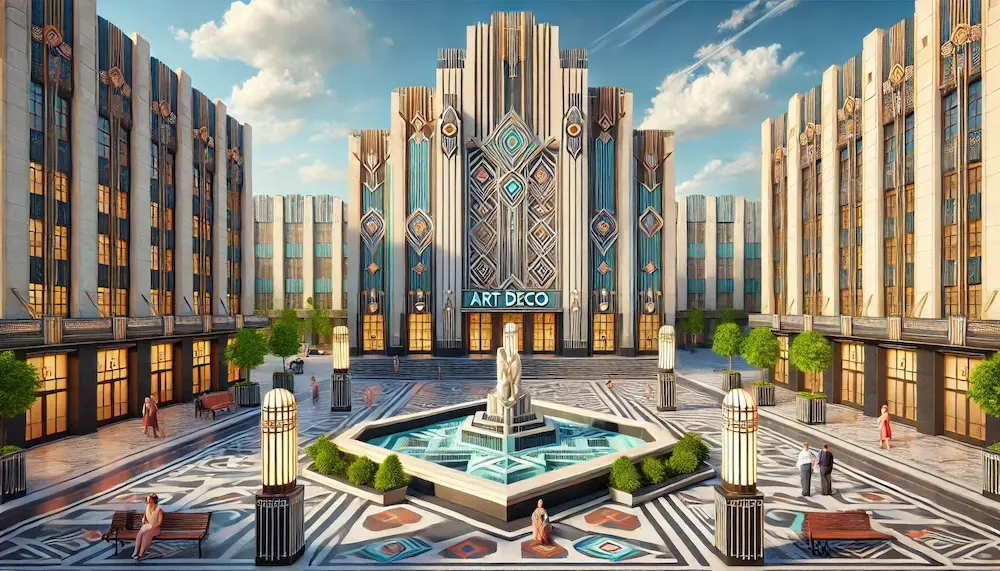Art Deco squares, emerging in the early 20th century, encapsulate the elegance and modernity of the Art Deco movement. Characterized by bold geometric patterns, rich materials, and ornamental detailing, these public spaces reflect the era’s fascination with progress and luxury.
History and Origins of Art Deco Squares
The Art Deco movement originated in France in the 1910s and gained international prominence following the 1925 International Exhibition of Modern Decorative and Industrial Arts in Paris. This style sought to break away from traditional architectural forms, embracing modernity through the use of new materials and design techniques. In urban planning, Art Deco principles were applied to public squares, resulting in spaces that combined functionality with decorative artistry.
Key Features of Art Deco Squares
- Geometric Designs: Art Deco squares often feature geometric layouts, with patterns such as zigzags, chevrons, and stepped forms integrated into pavements and landscaping.
- Ornamental Elements: Decorative features, including stylized fountains, sculptures, and lighting fixtures, showcase motifs like sunbursts, floral designs, and symmetrical shapes.
- Luxurious Materials: The use of materials such as marble, chrome, and glass adds a sense of opulence and modernity to the space.
- Integration with Surrounding Architecture: Art Deco squares are often flanked by buildings that exhibit the same stylistic elements, creating a cohesive visual experience.
Applications of Art Deco Squares
Art Deco squares have been implemented in various cities worldwide, serving as focal points for social interaction, commerce, and cultural events. Notable examples include:
- Miami Beach, Florida: The city’s Art Deco Historic District features numerous public spaces and squares adorned with Art Deco elements, reflecting the area’s architectural heritage.
- Casablanca, Morocco: The city’s architecture showcases a blend of Art Deco and Neo-Moorish styles, with public squares that highlight this unique fusion.
Considerations When Designing Art Deco Squares
- Preservation of Historical Integrity: Maintaining the original design elements and materials is crucial for preserving the historical significance of Art Deco squares.
- Adaptation to Modern Use: While preserving historical aspects, it’s essential to ensure that the space meets contemporary functional requirements for public use.
Conclusion
Art Deco squares represent a harmonious blend of functionality and decorative artistry, reflecting the optimism and innovation of the early 20th century. Their enduring appeal continues to influence urban design, offering timeless spaces that celebrate both history and modernity.
